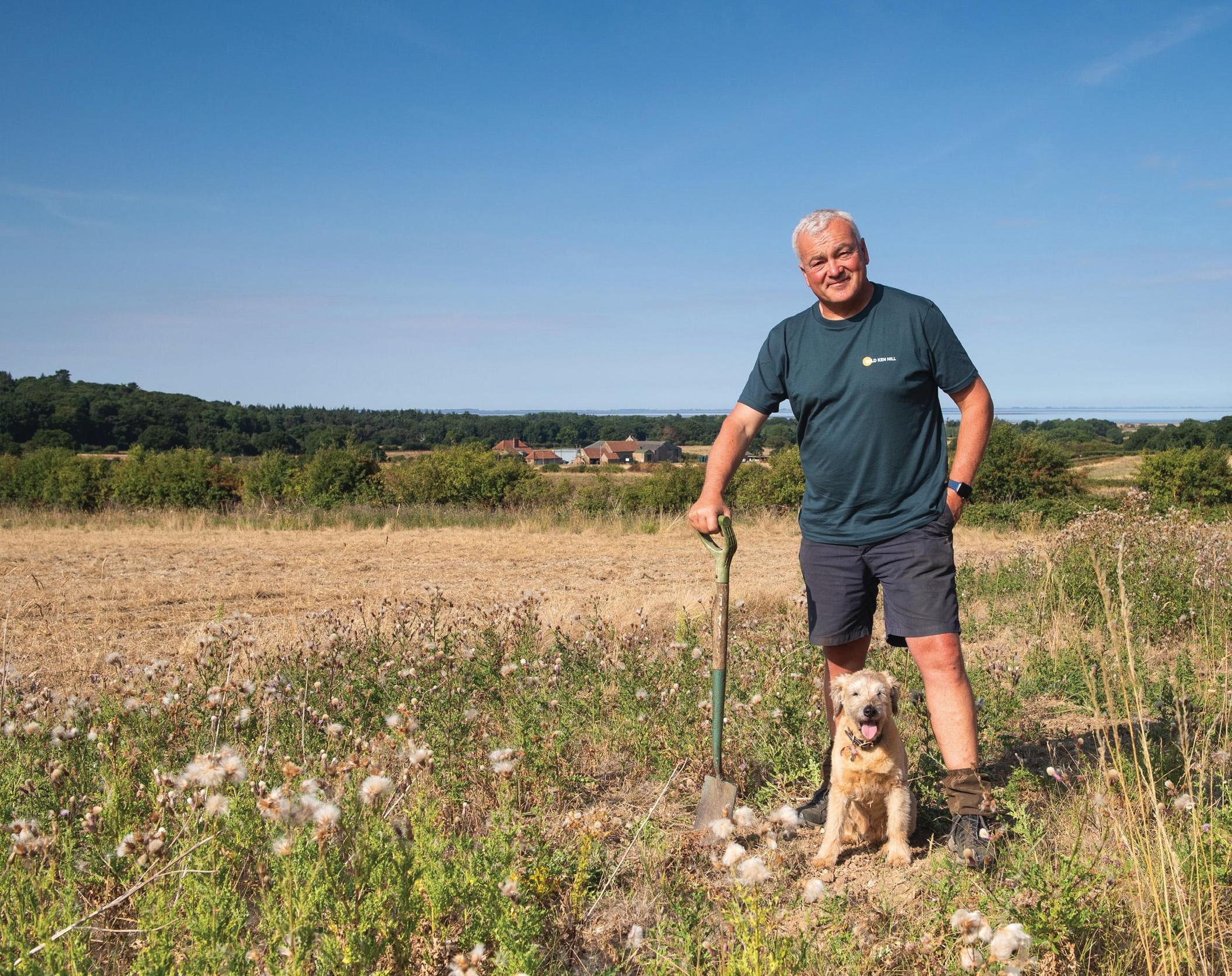
THIS summer, two very British festivals took place. Both saw crowds of people in Wellingtons and denim cut-offs gathering in fields to the camp, drinking beer, and dance a summer's evening away. Those attending Somerset's Glastonbury Festival had come for the music. Those at Groundswell in Hertfordshire, however, were there to share ideas about something being described as 'the new rock and roll': regenerative farming.
In 2017, brothers John and Paul Cherry hosted the first Groundswell festival in a shed on their farm when 450 farmers came together to discuss techniques such as direct drilling and cover cropping. Six years on, that number has swelled to 5,000.
Regenerative farming seems to have captured the imagination of both government and big business-George Eustice, Secretary of State for Defra, chose Groundswell to launch the Government's new Sustainable Farming Incentive, and the fast-food chain McDonald's is trialling regenerative-grazing methods. However, with no agreed definition or regulation, what does regenerative agriculture actually mean?
The answer must be seen in the context of the past 70 years when chemicals and machinery achieved the job of feeding the world. Now, enough food is produced globally to feed up to six billion more people than currently exist, although it doesn't always get to those it should. The unintended consequences of this have caused catastrophic damage to our wildlife and soils, contributed to global warming, fuelled an obesity crisis, and created a food system that means 40% of all food produced is either lost or wasted.
Bu hikaye Country Life UK dergisinin August 17, 2022 sayısından alınmıştır.
Start your 7-day Magzter GOLD free trial to access thousands of curated premium stories, and 9,000+ magazines and newspapers.
Already a subscriber ? Giriş Yap
Bu hikaye Country Life UK dergisinin August 17, 2022 sayısından alınmıştır.
Start your 7-day Magzter GOLD free trial to access thousands of curated premium stories, and 9,000+ magazines and newspapers.
Already a subscriber? Giriş Yap

Save our family farms
IT Tremains to be seen whether the Government will listen to the more than 20,000 farming people who thronged Whitehall in central London on November 19 to protest against changes to inheritance tax that could destroy countless family farms, but the impact of the good-hearted, sombre crowds was immediate and positive.

A very good dog
THE Spanish Pointer (1766–68) by Stubbs, a landmark painting in that it is the artist’s first depiction of a dog, has only been exhibited once in the 250 years since it was painted.

The great astral sneeze
Aurora Borealis, linked to celestial reindeer, firefoxes and assassinations, is one of Nature's most mesmerising, if fickle displays and has made headlines this year. Harry Pearson finds out why

'What a good boy am I'
We think of them as the stuff of childhood, but nursery rhymes such as Little Jack Horner tell tales of decidedly adult carryings-on, discovers Ian Morton

Forever a chorister
The music-and way of living-of the cabaret performer Kit Hesketh-Harvey was rooted in his upbringing as a cathedral chorister, as his sister, Sarah Sands, discovered after his death

Best of British
In this collection of short (5,000-6,000-word) pen portraits, writes the author, 'I wanted to present a number of \"Great British Commanders\" as individuals; not because I am a devotee of the \"great man, or woman, school of history\", but simply because the task is interesting.' It is, and so are Michael Clarke's choices.

Old habits die hard
Once an antique dealer, always an antique dealer, even well into retirement age, as a crop of interesting sales past and future proves

It takes the biscuit
Biscuit tins, with their whimsical shapes and delightful motifs, spark nostalgic memories of grandmother's sweet tea, but they are a remarkably recent invention. Matthew Dennison pays tribute to the ingenious Victorians who devised them

It's always darkest before the dawn
After witnessing a particularly lacklustre and insipid dawn on a leaden November day, John Lewis-Stempel takes solace in the fleeting appearance of a rare black fox and a kestrel in hot pursuit of a pipistrelle bat

Tarrying in the mulberry shade
On a visit to the Gainsborough Museum in Sudbury, Suffolk, in August, I lost my husband for half an hour and began to get nervous. Fortunately, an attendant had spotted him vanishing under the cloak of the old mulberry tree in the garden.